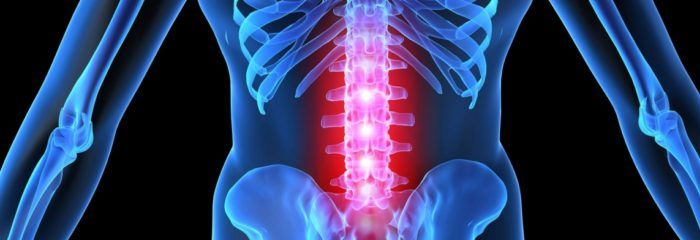Neuritis-what is this disease, the cause of the? Description, symptoms and prevention of the disease and the rapid

Neuritis - inflammation of the peripheral nerve trunk, manifested by movement disorders and sensory disturbances in the area of innervation of a nerve.
Neuritis may be local, when it is suffering only one nerve, or multiple (polyneuritis), where several damaged nerves.
Neuritis - Causes
Local neuritis may occur as a result of local infection, tumors, injury or arthritis.
Multiple neuritis caused by bacterial or viral infections, intoxication body. It contributes to the development of polyneuritis hypothermia, vitamin deficiency, vascular and other disorders.
Neuritis may develop as a result of compression of nerves, which may occur due to the contraction of fibrous and bony canals. In such cases we speak of tunnel syndrome. Besides, compression of nerves possibly a herniated disc, osteophytes in osteochondrosis.
symptoms of neuritis
The clinical picture is determined by the nerve functions, area of innervation, the degree of destruction. Most of the peripheral nerve consists of fibers of various types: motor, vegetative and sensitive. Defeat each type of fiber causes different symptoms:
- sensitivity disorders - paresthesia (the feeling of "pins and needles", tingling), numbness, reduction or loss of sensation in the area of innervation;
- movement disorders - partial (paresis) or complete (paralysis) reduction in force in innervated muscles, loss or reduction of tendon reflexes, development of muscle atrophy;
- trophic and vegetative disorders - skin cyanosis, puffiness, Local hair loss, depigmentation, dryness and thinning of the skin, Sweating, brittle nails, development of venous ulcers, etc..
Initially, the disease is pain and numbness. In some neuritis may experience specific symptoms.
Neuritis - Diagnosis
Neuritis diagnosis based on the symptoms of the disease. To clarify the diagnosis is carried out electroneurogram.
Neuritis - Types of diseases
- Axial neuritis - a loss of nerve axial cylinders.
- Vegetative neuritis - a lesion of the peripheral fibers of the autonomic nervous system, manifested trophic disorders (discoloration, skin temperature and others.).
- Vibrating autonomic neuritis - professional neuritis, caused by constant exposure to vibration. Observed mainly in the feet and hands.
- Ascending neuritis - occurs when the injury of peripheral parts of the arms or legs. Manifested attacks of pain (paroksizmы causalgia) and vasomotor (vascular) violations, gradually spreading from the periphery to the center.
- Hypertrophic neuritis Dejerine-Sottas - a hereditary disease, tending to progression. Typical membrane hypertrophy of nerve fibers, which compresses the nerve conductive portion, resulting in nerve gradually degenerates and loses its function. The disease manifests itself slowly rising peripheral paresis, muscle atrophy, violation of the sensitivity of the type polinevriticheskomu.
- Neuritis Gombo - disintegration of the myelin nerve sheath in restricted areas of the nerve fiber. The inner part of the nerve (axial cylinder) while maintaining.
- Interstitial neuritis - nerve damage connective tissue. Often develops as a result of an autoimmune process.
- optic neuritis (optic neuritis) - pathology of the optic nerve.
- False optic neuritis - an anomaly of the optic nerve, reminiscent of the clinical picture of his inflammation. At the same time it does not develop atrophy of nerve, It does not suffer from visual function.
- Infective neuritis - develops as a complication of infectious diseases.
- Cochlear neuritis - the defeat of the cochlear auditory nerve, which leads to the appearance of noise in the ear, hearing loss by type of violation of sound perception.
- Parenchymatous neuritis - the defeat of the axons (mielinovoy shell, nerve fiber). Later involved connective tissue nerve structure.
- Professional neuritis - develops because of exposure to occupational hazards (heavy metal intoxication, other toxic substances).
- Optic neuritis - inflammation of the optic nerve outside of eyeball:
- Axial optic neuritis is localized in the optic nerve bundle makulopapillyarnom;
- Interstitial optic neuritis begins in the optic nerve sheath and extends deep into the nerve trunk;
- Orbital optic neuritis;
- Peripheral optic neuritis;
- Transversalьnый retrobulьbarnый neuritis.
- Neuritis Rossolimo - one of the forms of hypertrophic neuritis Dejerine-Sottas, which occurs in childhood, characterized by recurrent.
- Traumatic neuritis - due to injury nerva.Nevrit - is a serious disease. Treatment should begin immediately, like the first symptoms, to prevent the development of complications (paresis, paralichey).
neuritis treatment
Treatment begins with establishing and eliminating the causes of neuritis.
With infectious disease origin administered antiviral or antibacterial agents (depending on the specific pathogen).
When neuritis toxic origin must withdraw toxic substances from the body.
Traumatic neuritis may require surgery.
When neuritis shows vitamin (B vitamins) – milgamma etc..
Effective muscle massage, which innervate the affected nerve, as well as physiotherapy.
Complications
- movement disorders (until paralysis);
- violation of the sensitivity;
- amyotrophy.
prevention neurite
Balanced diet, prompt treatment of any disease, Hardening, Vaccination against infectious diseases will help to avoid the development of neuritis.
